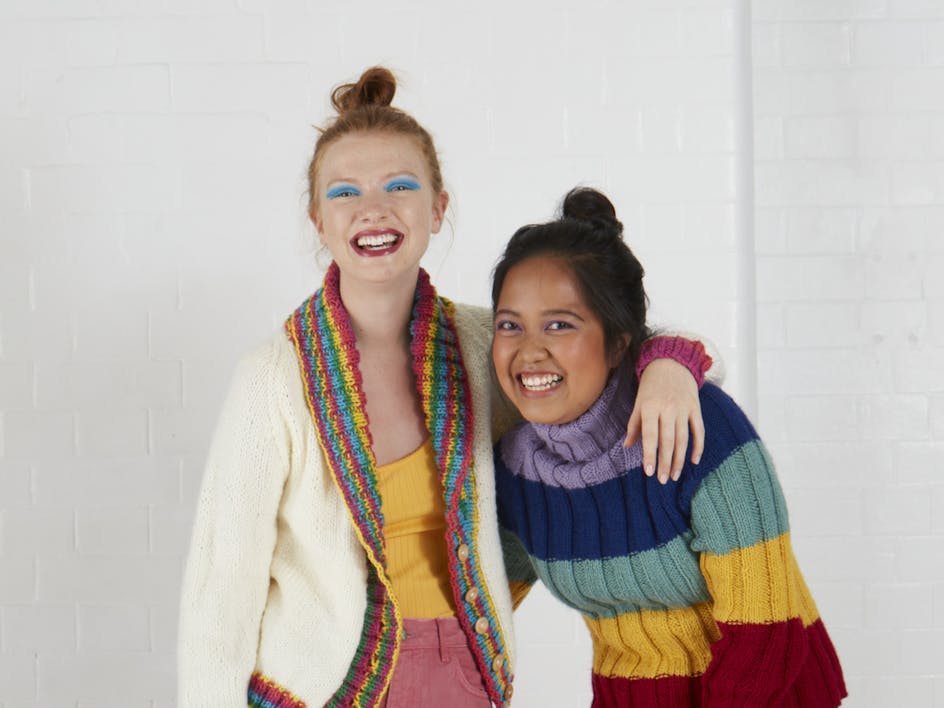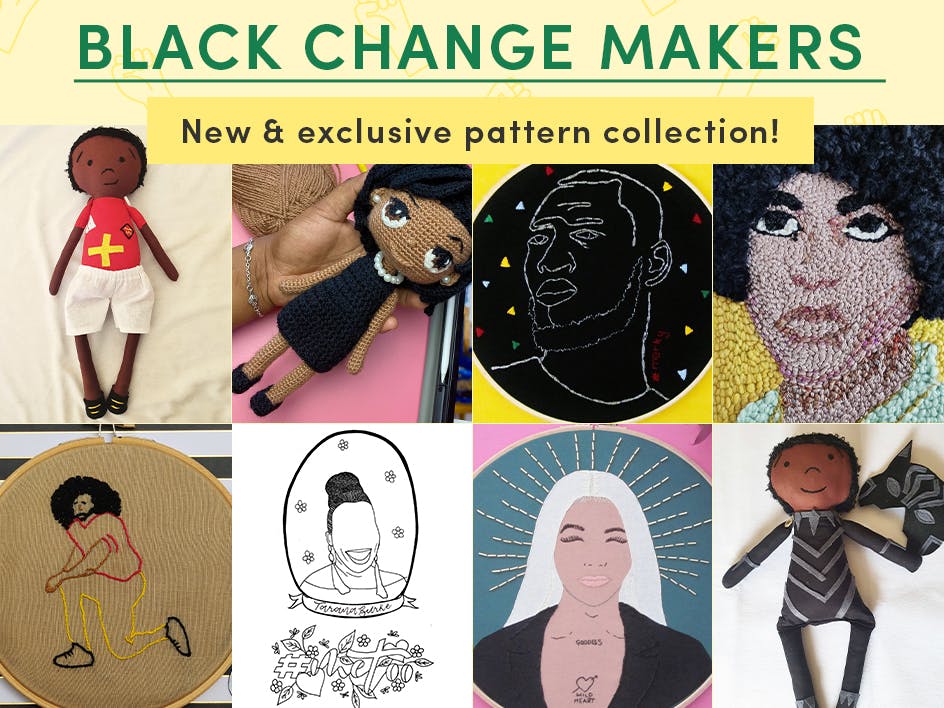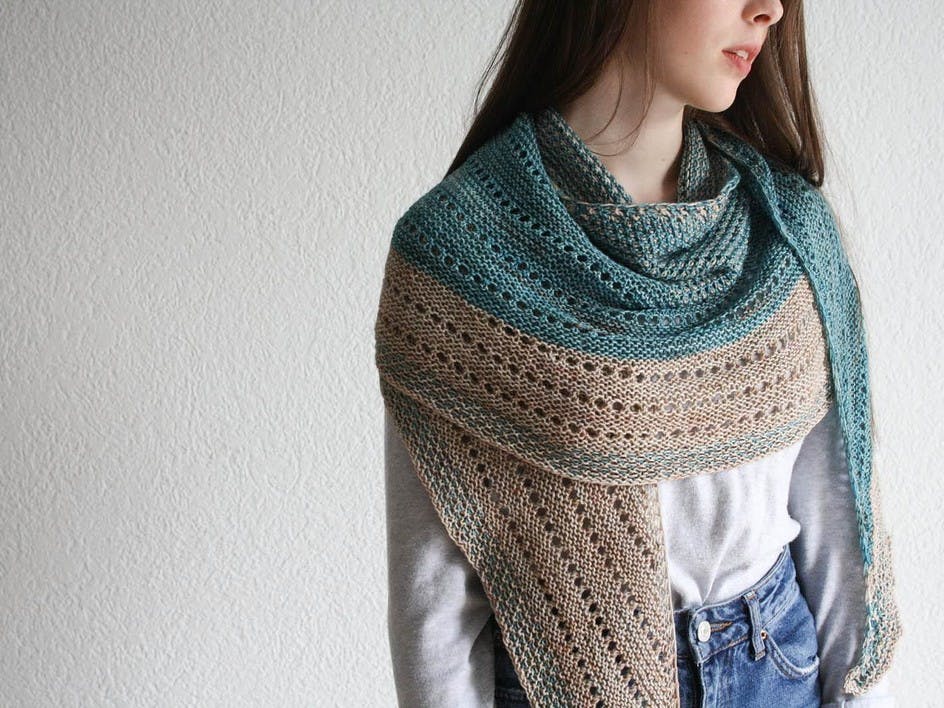How to make a temperature blanket
Published on 20 December 2022 By Merion 7 min read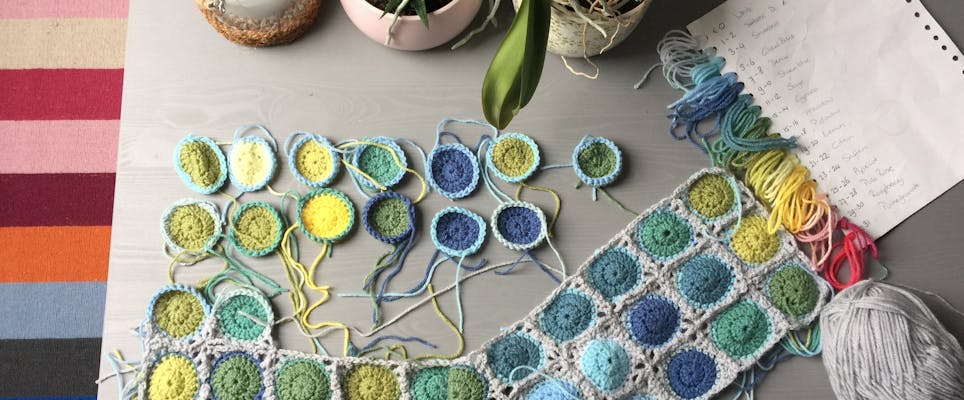
You've seen them on Instagram and Pinterest, and now it's time make your own! A temperature blanket, climate blanket, sky blanket - whatever you'd like to call them, is a fabulous way to record nature's changes in a year long project. Knit or crochet your very own blanket with Chloe Bailey's simple blanket recipe!
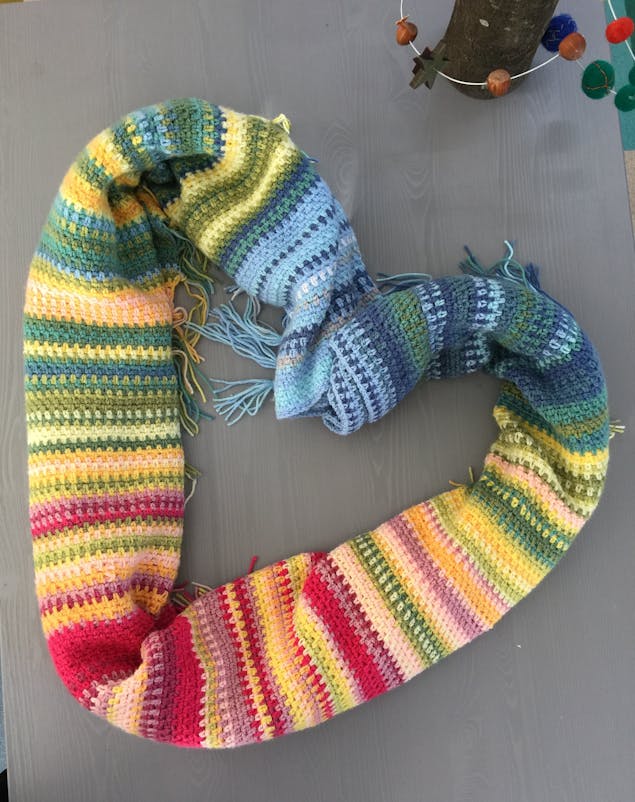
What is a temperature blanket? It's a project that lasts for a whole year - where you knit or crochet a row of a blanket in a colour you assign to a temperature - perhaps a range of blues and whites for cool temperatures in winter, greens and yellows as the days warm up in spring, and hot pinks and reds for summer - you get the picture! You end up with a gorgeous record of what the weather was doing for 365 days! In the past, knitters and crocheters have made sky blankets, where they record the colours of the sky each day, and it's a good tool for monitoring feelings and mental health too.
If you can't face a whole blanket, you can make a scarf using the same method, illustrated at Davos to show climate change, where Larry Fink, the American billionaire businessman wore his climate scarf with pride. A temperature blanket is a great way to visualise climate change, and the Tempestry Project have used this in the national parks of the US to illustrate how our climate is changing. All over the world, temperature blankets look different - imagine how opposite an Australian blanket would be, compared to one from Switzerland!
Step 1: Choose your colours and yarn
Traditionally, temperature blankets use a gradient colour palette. You could choose one colour, or combine several colours in a gradient. Using a gradient with a strong contrast from one end to the other will result in pops of colour on days when the temperature is wildly different. Equally, using a subtle gradient will result in a gentle blend of colours as the temperatures rise and fall throughout the year.
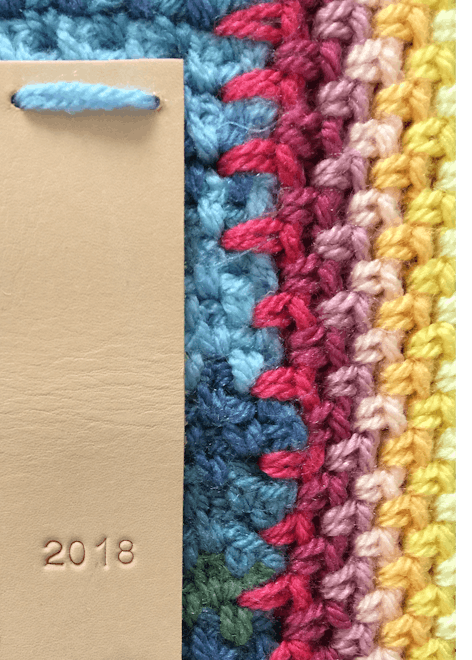
It is helpful to look at previous years’ temperatures to work out how many degrees you might need to cover before deciding how many colours you want to use. For example, in my corner of South East England I know that the temperature generally ranges from 0°C-30°C (with maybe a couple of dips below or spikes above on crazily cold or hot days). So with an average 30°C range, I might choose to use 6 colours (5°C per colour), 10 colours (3°C per colour), or even 15 colours (2°C per colour). For the spikes and severe dips in temperature I would use the colours at each end of the spectrum, or perhaps add a bold contrast colour to mark out those crazy days! The more colours you use (ie. the fewer degrees are assigned to each colour), the more variation you’ll see in your blanket.
A stitch in climate change."
This recipe is written for DK yarn, and the stitch counts have been calculated to result in a rectangular blanket, where the short cast on edge equals 2/3 the length of the long edge. My blanket recipe uses Paintbox Yarns Simply DK, but you can use any yarn that you love (Paintbox Yarns Cotton DK is a fab choice too!) - and even include different textures, like adding in a strand of mohair for snow, or even stitching beads in for rain!

Knit or crochet?
You can use either! I have given you specifications for knitting or crochet, in a DK weight. If you knit your blanket, you might prefer to use a long circular needle so that you are able to work the full width of the blanket without feeling too scrunched up.

Bianca's blanket story
Hi, I am Bianca, and I live in Switzerland. I started crocheting about six years ago, and once I started, I couldn't stop! Crocheting became my way to relax and forget the stress of the days - I work in a Cath Lab in a busy hospital, where we look after heart problems, and then when I get home, I have two active boys to look after!
First I made some hats, scarves, and then blankets! I needed something that I could crochet a little bit each day and surfing around on Instagram I saw several temperature blankets made with stripes, granny squares, C2C blankets and more - but I was worried if I would ever finish it - but I loved it!
When you see the weather changing, you see the flow of nature."
I made my first blanket in 2018. That was so much fun that I made another one in 2019, and I've started another one for 2020. I chose colours that reflected the temperature: white for the really cold days because it reminds me of ice and snow, blues for the winter and greens for the spring, for new leaves and green grass. I used yellows for 19-24 degrees for the sunshine, and rose for the really hot days. I changed colour for every two degrees difference, but some people change every 3-5 degrees. I took the highest temperature of the day, each day and you can either use an external thermometer or check online.
When you see the weather changing, you see the flow of nature. The first year, I had two weeks of white yarn (the temperature was below zero), but in 2019, only one day, and for 2020, not one white row yet!
Follow Bianca's blanket journey on Instagram!
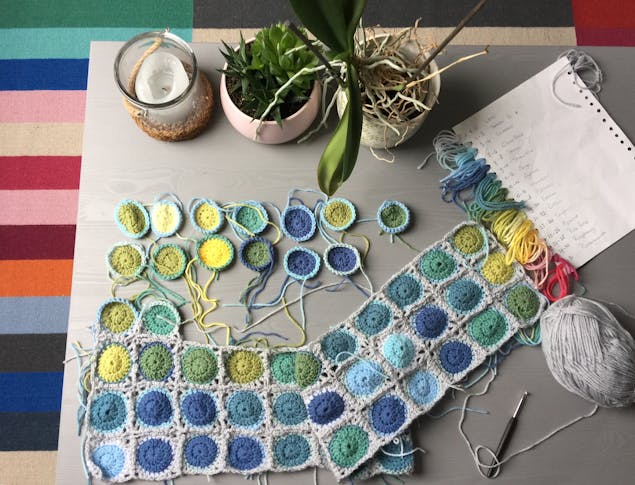
Bianca's blanket is made in Stylecraft Special DK in crochet linen stitch - if you're inspired by her colour choices, her temperatures match these shades:
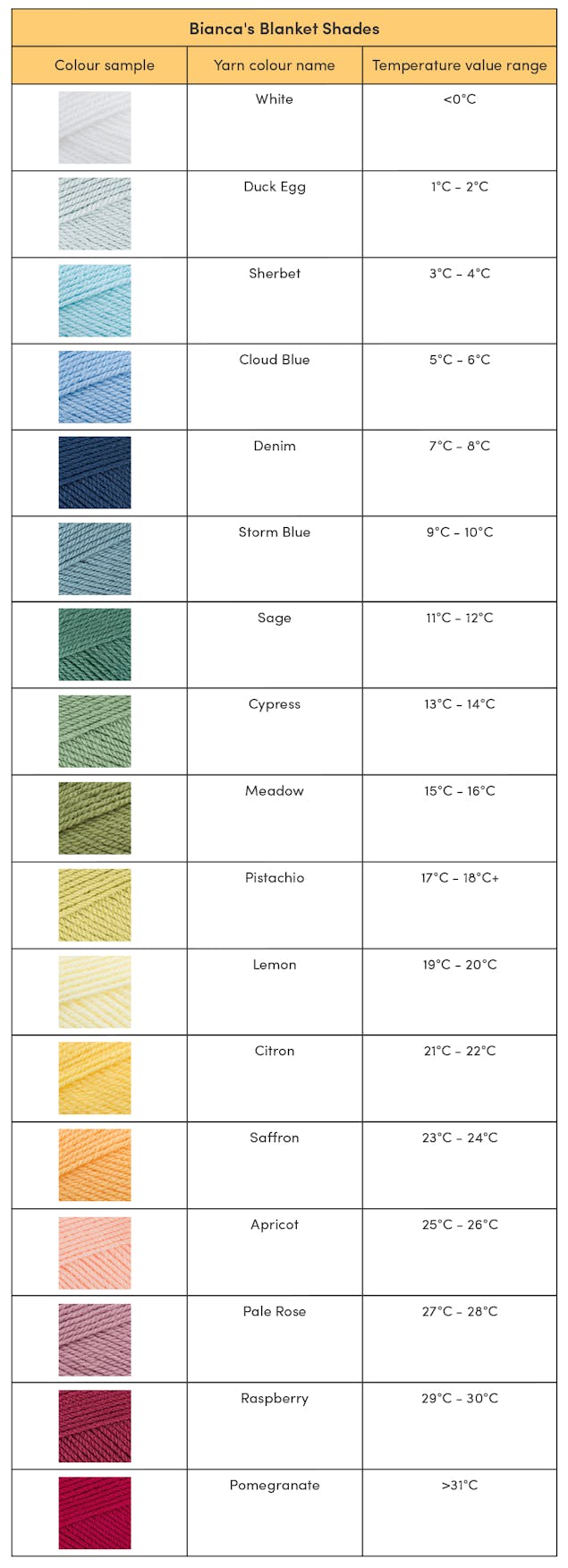
Alternative stitches
Bianca used linen stitch for her 2018 and 2019 blankets, which is sometimes called crochet moss stitch.
Chain an even number:
Foundation row: Begin by working a sc (dc UK) in the 2nd ch from the hook, then *ch 1, skip the next ch, sc (dc) in the next ch, repeat from * to end, turn.
Row 1: Ch1, skip the first sc (dc), *sc (dc) in the next ch-1 sp, ch1, skip the next sc (dc) and repeat from * to end of row. Work a sc (dc) in the previous ch1 and turn. Repeat this row changing colours according to your temperature changes!
For 2020, Bianca is making a granny square temperature blanket, and you can check her progress on her Instagram!
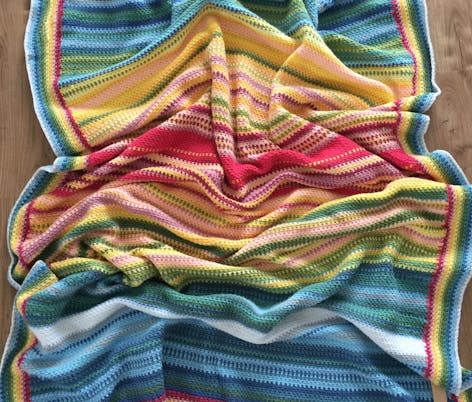
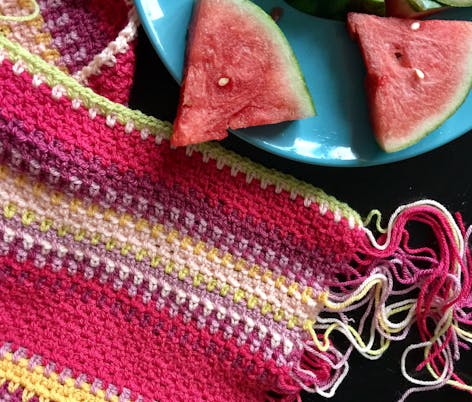
Step 2: Cast on
For Chloe's temperature blanket recipe, once you’ve chosen your colours and your yarn, simply use the charts below for your cast on stitches/chains and how many rows to knit or crochet for each day.
Knit
For this knitted temperature blanket, use garter stitch.
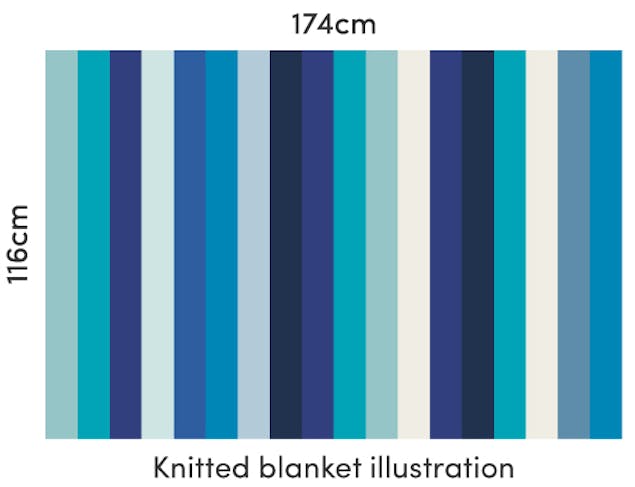

Crochet
For my simple crochet temperature blanket, use double crochet UK / single crochet US.
NB. The starting chain includes a turning chain, so each following row will be 211 stitches, and don’t forget to work a turning chain at the end of each row!

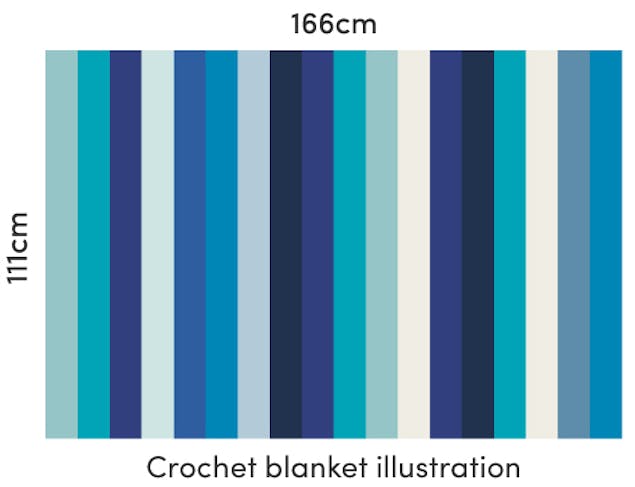
Chloe's gradient temperature blanket colours
If you, like me, would prefer a blanket that stays in one theme of colours - like blues, or greens, this is the selection I have chosen to create my blanket, in Paintbox Yarns Simply DK, but it also works in Paintbox Yarns Cotton DK. You can order your Chloe's Paintbox Yarns Cotton DK 10 Ball Colour Pack here or choose any shades you like to illustrate the colour changes - so this is your chance to make your temperature blanket unique!
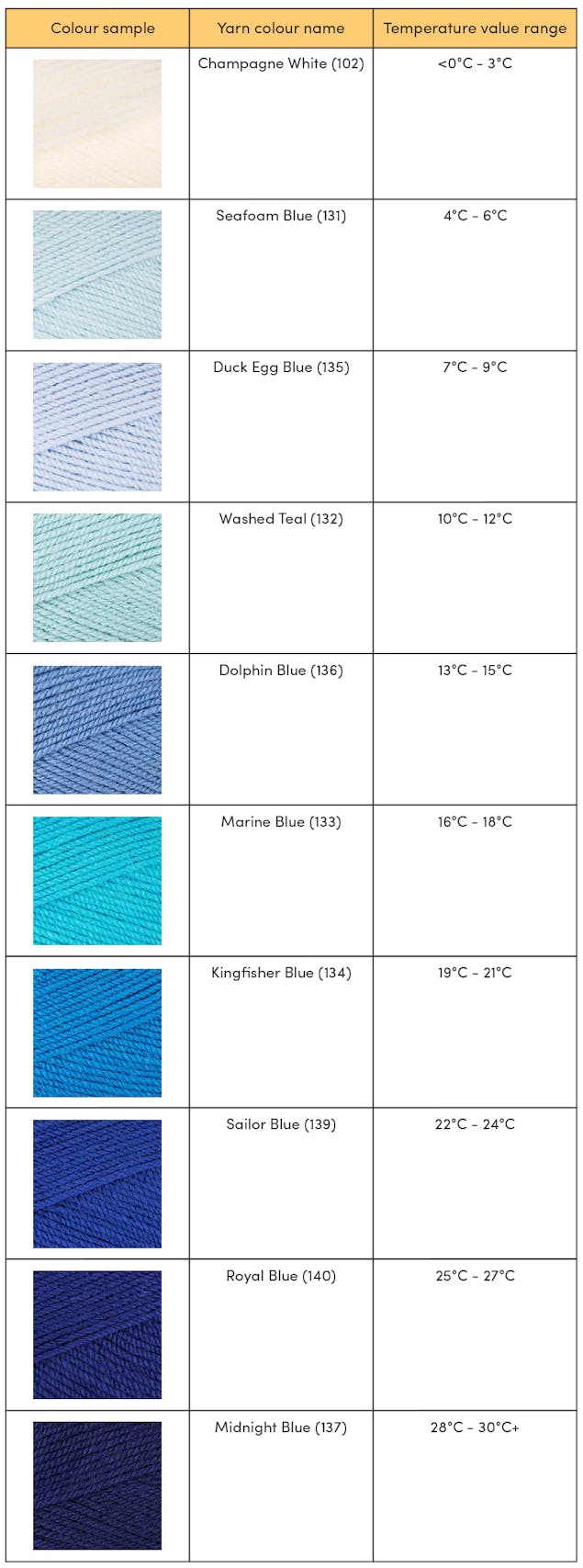
Step 3: Knit or crochet 365 days of colourful temperatures!
It is up to you whether you choose to record the highest, lowest, or average daily temperatures, but whatever value you choose, simply use the assigned colour from your gradient for that day’s temperature.
Follow Chloe on Instagram!





